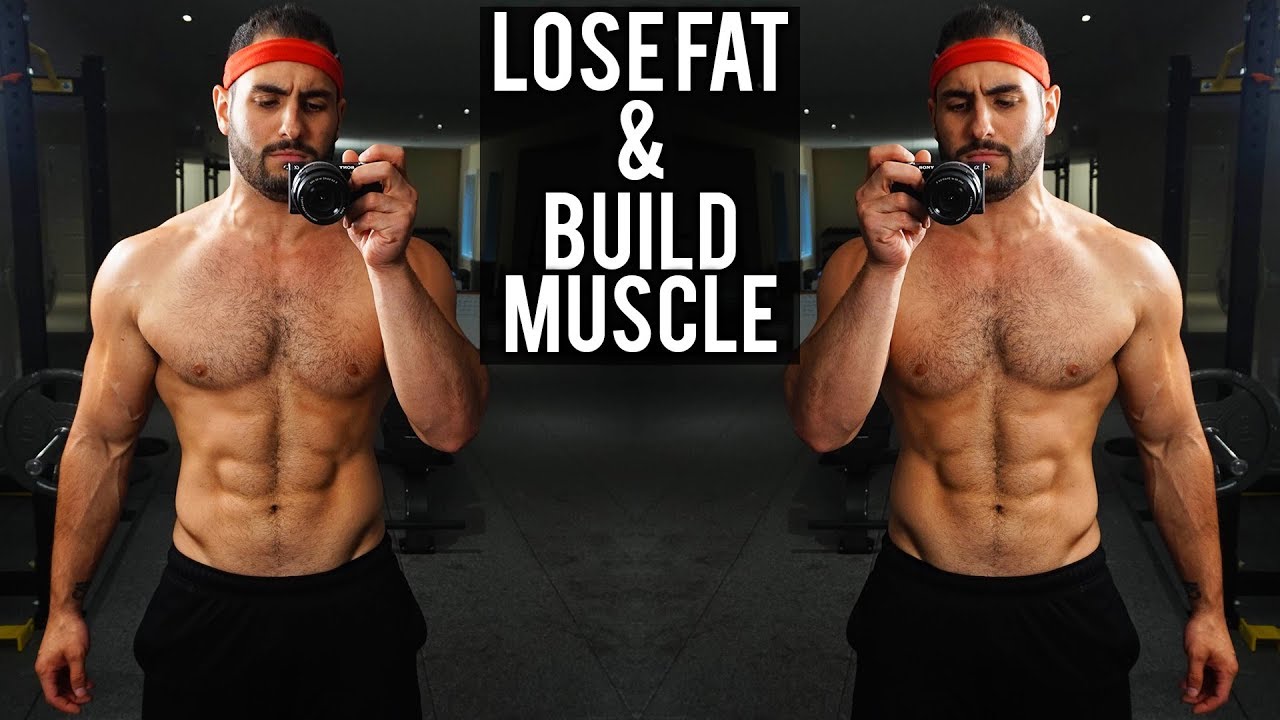 When asked, the vast majority of exercisers say that they want to lose fat and gain muscle although many will describe this process simply as “getting in shape” or “toning up”. When you lose fat, your muscles become more defined and the more muscle you have, the more clearly they will be visible.
When asked, the vast majority of exercisers say that they want to lose fat and gain muscle although many will describe this process simply as “getting in shape” or “toning up”. When you lose fat, your muscles become more defined and the more muscle you have, the more clearly they will be visible.
Unfortunately, for the vast majority, losing fat while gaining muscle is nothing more than a pipe dream. With the exception of complete beginners and those using performance-enhancing drugs, losing fat and gaining muscle are two very different processes.
Losing fat
Fat is stored energy and is the result of eating too much, not being active enough or, most likely, these two things combined. To use this stored energy you need to either eat a little less, move a little more, or for best results, do both. This is called creating a calorie deficit. Only if there is a calorie deficit will force your body use stored fat for fuel and the greater the deficit, the more fat you will burn.
The most effective way to control your food intake is to follow a diet, the best diet being the one you can stick with. Diets come in all shapes and sizes and where some are very effective and are designed for long term adherence, others are too severe for anything but short term use and are often referred to as “crash diets”. Crash diets are best avoided and, instead, you should take the long, slow approach to weight loss. Slightly reducing your carbohydrate and/or fat intake while maintaining or increasing your protein intake and basing your meals on lean meats, fish, whole foods and vegetables is arguably the best way to eat for long term leanness.
In terms of exercise, anything that involves movement will work although some exercise modalities are better for fat burning than others. High-intensity interval training and cardio are well known for their fat-burning qualities and strength training can help increase your metabolism (the rate at which you burn calories) but activities such as yoga are less effective. Try and be active every day even if you don’t exercise – walking on the days you don’t work out is a way to gently increase your calorific expenditure.
To lose one to two pounds of fat per week you will need to create a 500 to 1000 calorie per day deficit split between eating less and moving more.
Gaining muscle
Where losing fat requires a calorie deficit, gaining muscle requires a calorie surplus or, in other words, you need to eat a little more to fuel the muscle-building process. Because it is all but impossible to calculate exactly how much extra food you need to eat to gain muscle, most people simply eat more than normal and resign themselves to gaining a little fat along the way. This is why losing fat and gaining muscle simultaneously is all but impossible.
Your body requires carbohydrates to fuel your workouts and protein to provide the necessary amino acids required for muscle building. In addition, there needs to be an abundance of vitamins, minerals, water and fibre present in the diet to keep your body healthy as poor health will inhibit muscle growth.
The amount of additional calories required to build muscle depends on several circumstances such as how long and hard you train and how active you are outside of the gym but an additional 500 calories per day is a good place to start. If you feel like you are gaining too much fat with your muscle then reduce this figure but if you aren’t gaining at least a little bit of noticeable muscle each month, increases your calorific intake by a further 250 calories per day.
In terms of training, the best way to build muscle is to follow a bodybuilding-type workout regime consisting of moderate weights and reps e.g. sets of 6-12 reps with weights that are challenging but can still be handled safely and in good form. Focus on “big” exercises that use a slot of muscle groups simultaneously as these are the most effective for building muscle. Good examples include deadlifts, squats, bench presses, pull-ups, seated rows and shoulder presses. Strive to add more weight to the bar each week or do more reps with the same weight to ensure your muscles are sufficiently stimulated to grow. Doing the same workouts week after week will do little to increase muscle size.
In addition to eating more and training hard, rest and sleep are also vital for the muscle building process. Lifting weights literally breaks your muscles down so that they will grow back bigger and stronger. This takes time. Periodic days off from training and plenty of uninterrupted sleep are vital for the muscle building process.
If you are currently overweight, you would be best to spend a few months stripping away fat before you attempt to eat more and build muscle. Adding even more fat to an already overweight body makes no sense at all. Conversely, if you are already quite lean, you would do best to increase your food intake and focus on gaining muscle – any fat gained can easily be lost at a later date. By treating each goal as a separate endeavour, you are much more likely to experience success. Trying to achieve both at the same time will likely result in no progress at all.

